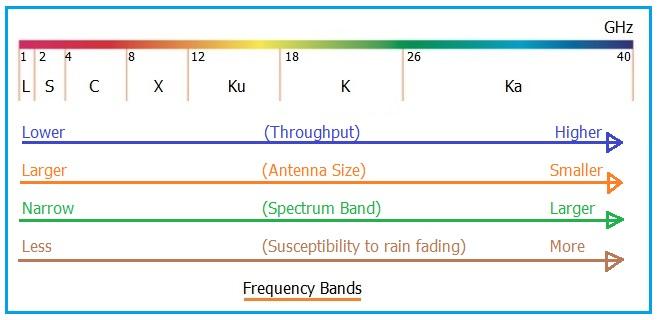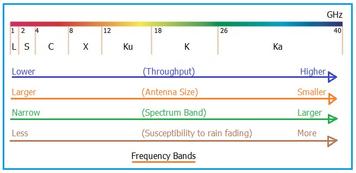K Band: Frequency, Advantages, and Applications
Advertisement
This article discusses K band frequency values, applications, and advantages.
Frequency Band Designation | Frequency Range | Wavelength
|---|--- K Band | 18 to 27 GHz | 1.7 to 1.1 cm
The K band frequency lies between the Ku Band and Ka Band. As shown in the table above, it spans from 18 GHz to 27 GHz in the frequency spectrum, corresponding to wavelengths between 1.1 centimeters and 1.7 centimeters.
K Band Frequency Advantages
Here are the advantages of using K Band frequencies compared to other frequency bands:
- Being situated between the Ku and Ka bands, the K band offers a throughput that’s higher than the Ku band but lower than the Ka band.
- The antenna size needed for K band is smaller than that for Ku band but larger than that for Ka band.
- K band is more susceptible to rain fading compared to Ku band, but less susceptible compared to Ka band.
The disadvantage of K band is as follows:
- K band frequencies experience high atmospheric attenuation, making them unsuitable for long-distance communication. Consequently, they are primarily used for short-range communication.
K Band Frequency Applications

Here are some applications of K Band Frequency:
- In the microwave domain, K band is used for radar and satellite applications.
- In the infrared domain, K band is used for astronomical purposes.
Advertisement
 RF
RF




